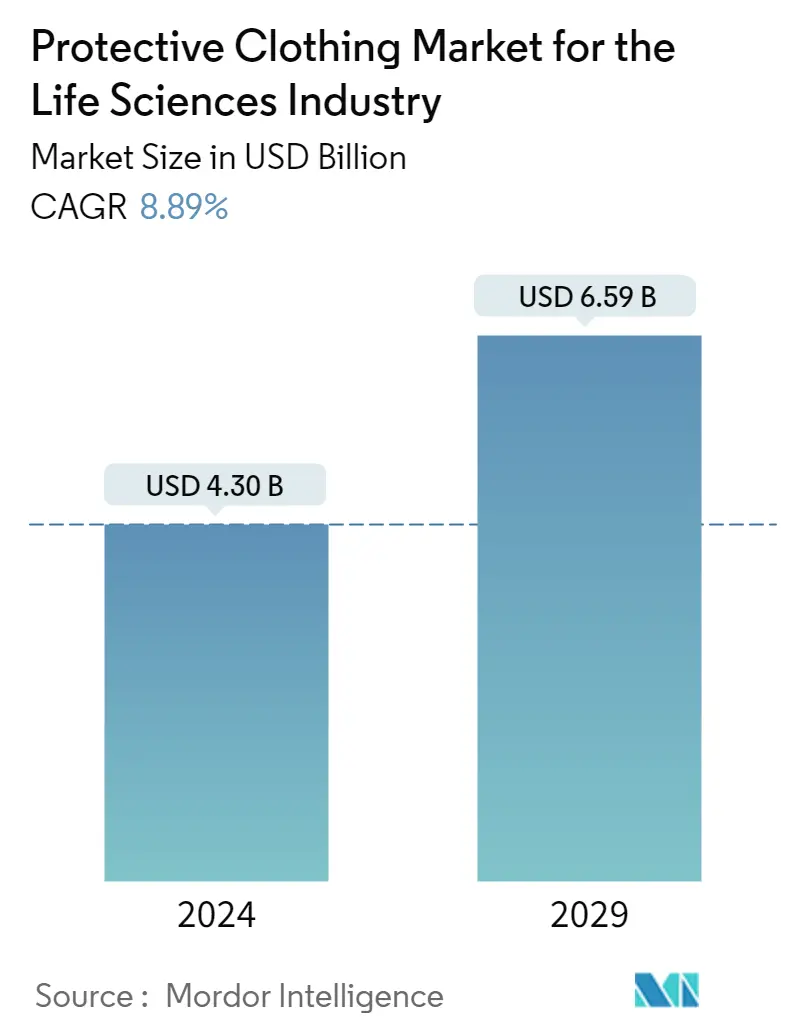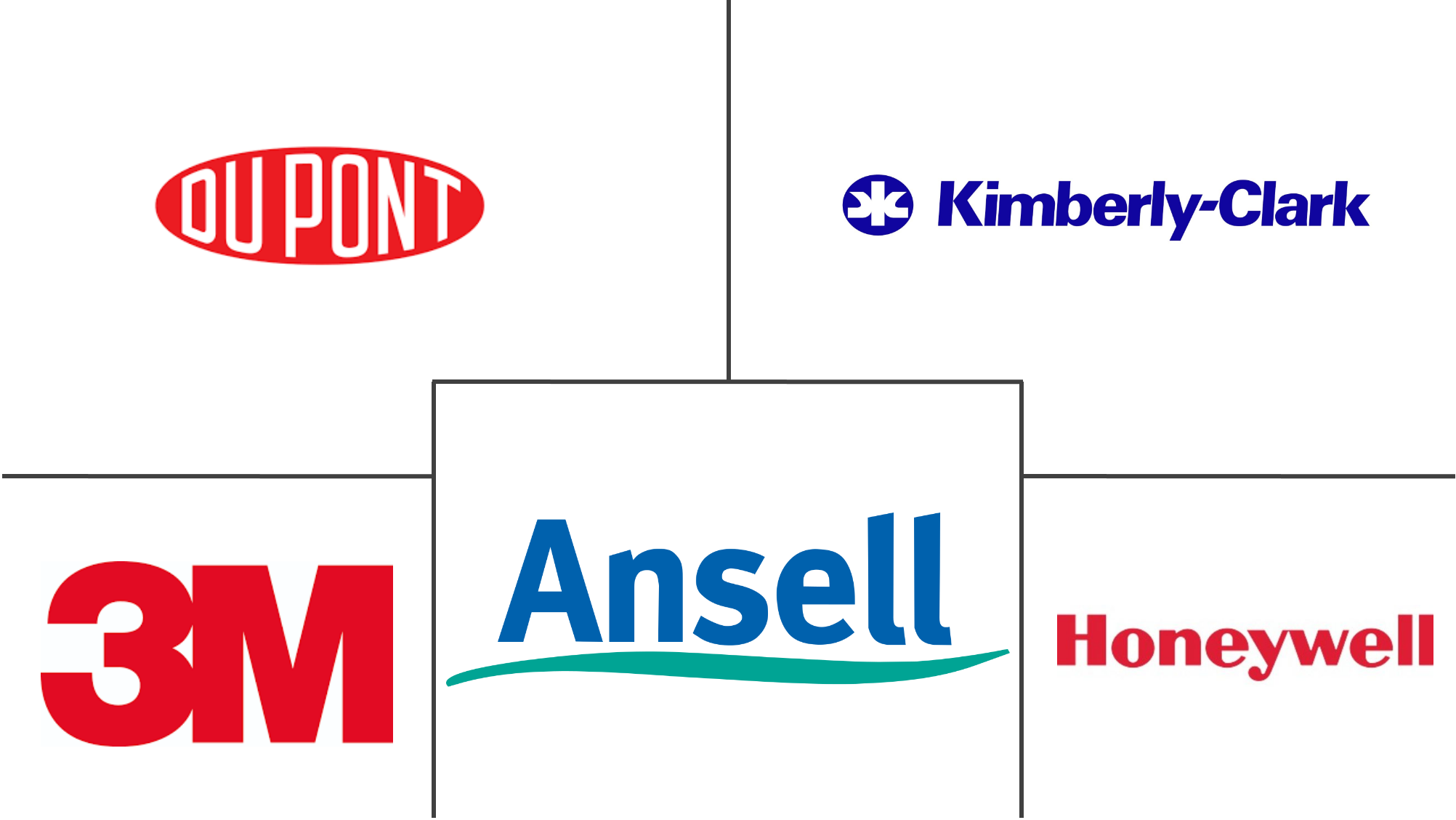Market Size of Protective Clothing Industry for the Life Sciences Industry

| Study Period | 2019 - 2029 |
| Market Size (2024) | USD 4.30 Billion |
| Market Size (2029) | USD 6.59 Billion |
| CAGR (2024 - 2029) | 8.89 % |
| Fastest Growing Market | North America |
| Largest Market | Asia-Pacific |
Major Players
*Disclaimer: Major Players sorted in no particular order |
Need a report that reflects how COVID-19 has impacted this market and its growth?
Protective Clothing Market Analysis
The Protective Clothing Market for the Life Sciences Industry is expected to grow from USD 4.30 billion in 2024 to USD 6.59 billion by 2029, at a CAGR of 8.89% during the forecast period (2024-2029).
The spread of COVID-19 around the world had a big effect on the growth of the protective clothing market in many different areas.The biggest part of the effect was the rise in sales and demand in the healthcare sector.COVID-19 had huge effects on health and the economy. When it first started, the sudden spread of the pandemic around the world caused panic.In a short amount of time, the demand for safety gear like face masks, gloves, face shields, air-filtering respirators, goggles, and gowns went up by a lot.
- The life sciences sector can be broadly categorized into three major segments (based on protective clothing applications): pharmaceutical, biotechnology, and medical. Generally, the relative growth of the life sciences segments is linked to the expenditure of regional markets for healthcare and innovation. In the current market scenario, almost all economies, especially developing economies, are increasing their spending on healthcare and innovation.
- Owing to the emerging manufacturing activity in the pharmaceuticals sector, the demand for protective clothing to be used in the preclinical and early-phase drug development and production environments is expected to experience increased demand. For example, the Chinese market is vibrant with preclinical and early-phase drugs, is a growing hub of biotech activity, and creates regional opportunities.
- The World Health Organization says that medical devices are all the tools that are used to diagnose or treat illnesses. This includes everything from surgical scissors to pacemakers and complex scanning equipment.Medical device equipment is classified into Classes I, IIA, IIB, and III based on the risk involved in handling the material.
- The way businesses in each province want to buy PPE in August 2021 is mostly the same as what the results of the PPES in May 2021 showed.According to the May 2021 results, firms in the healthcare and social assistance sectors led shortage expectations.
- Various government organizations recognize companies' efforts for their investment in the life sciences industry. For instance, in October 2021, UNCTAD awarded agencies for promoting new investment in health infrastructure, in the manufacturing of medical devices, pharmaceuticals, and vaccines, in the production of personal protective equipment, digital health, and life science research.
- Also, Levine Leichtman Capital Partners' company Technical Safety Services announced in September 2022 that it would buy CEPA Operations, Inc. ("CEPA"). They are based in Ontario, California. The company's services are performed across the lifecycle of a customer facility and ensure the compliant operation of controlled environments such as clean rooms, bio-safety cabinets, medical gas systems, high-purity water systems, laboratory equipment, and more.
